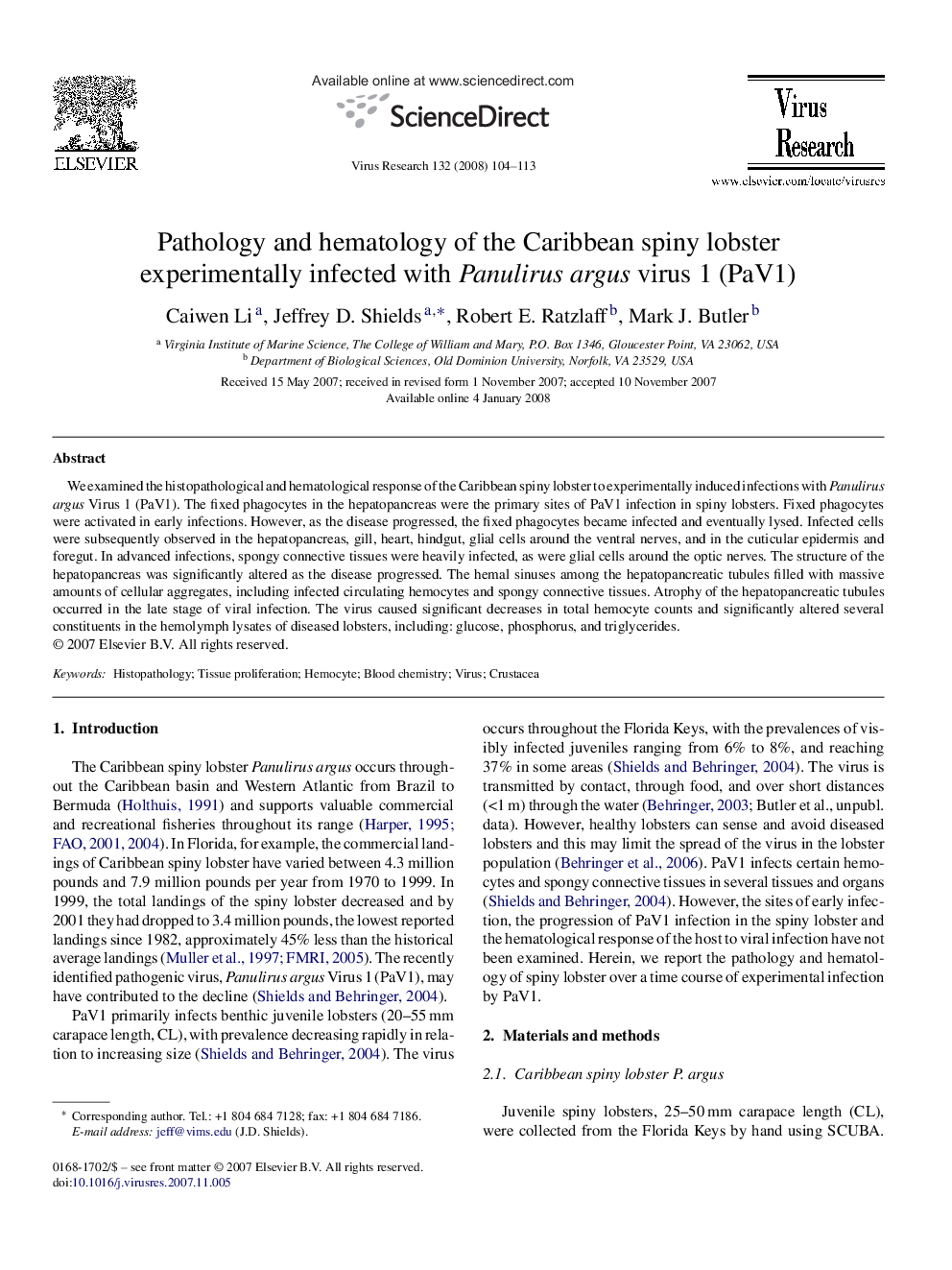| Article ID | Journal | Published Year | Pages | File Type |
|---|---|---|---|---|
| 3430515 | Virus Research | 2008 | 10 Pages |
We examined the histopathological and hematological response of the Caribbean spiny lobster to experimentally induced infections with Panulirus argus Virus 1 (PaV1). The fixed phagocytes in the hepatopancreas were the primary sites of PaV1 infection in spiny lobsters. Fixed phagocytes were activated in early infections. However, as the disease progressed, the fixed phagocytes became infected and eventually lysed. Infected cells were subsequently observed in the hepatopancreas, gill, heart, hindgut, glial cells around the ventral nerves, and in the cuticular epidermis and foregut. In advanced infections, spongy connective tissues were heavily infected, as were glial cells around the optic nerves. The structure of the hepatopancreas was significantly altered as the disease progressed. The hemal sinuses among the hepatopancreatic tubules filled with massive amounts of cellular aggregates, including infected circulating hemocytes and spongy connective tissues. Atrophy of the hepatopancreatic tubules occurred in the late stage of viral infection. The virus caused significant decreases in total hemocyte counts and significantly altered several constituents in the hemolymph lysates of diseased lobsters, including: glucose, phosphorus, and triglycerides.
